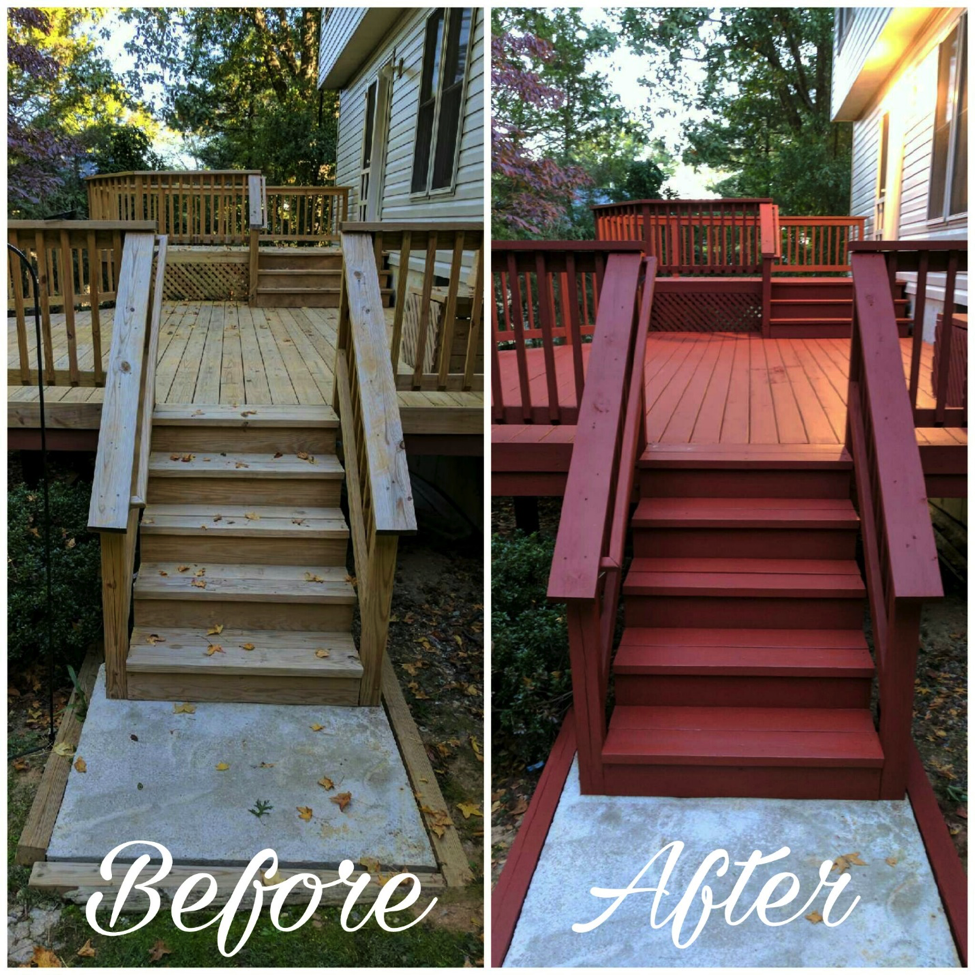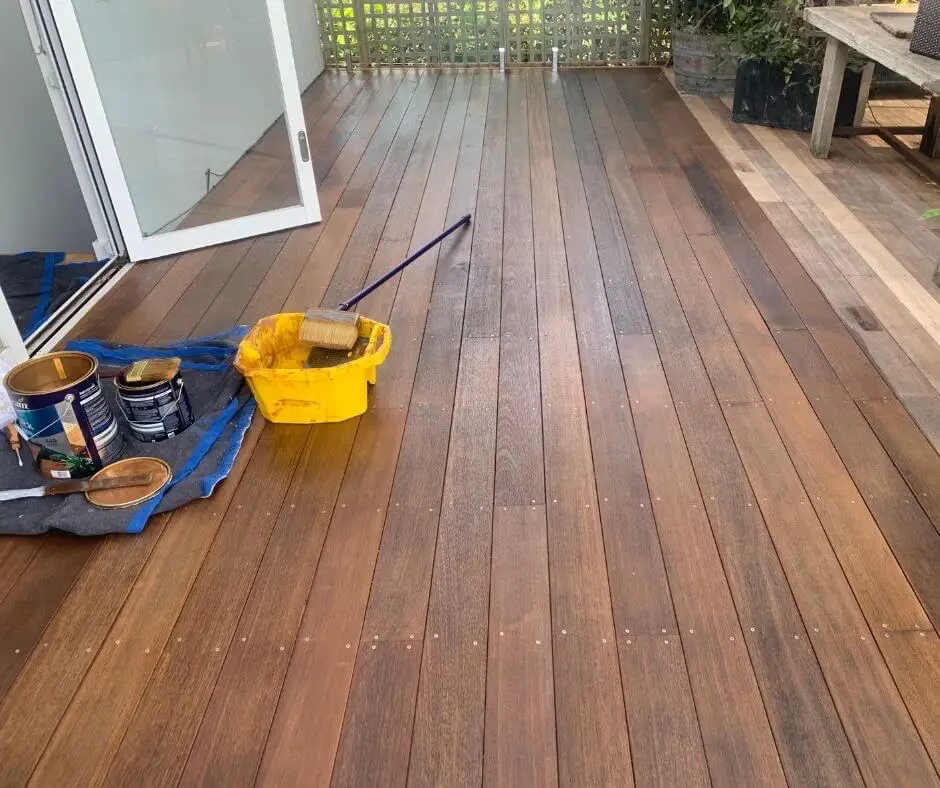Water-Based Stains for Your Deck: Advantages and Applications
Water-Based Stains for Your Deck: Advantages and Applications
Blog Article
A Comprehensive Guide to Different Sorts Of Deck Staining Techniques for Ultimate Protection and Aesthetic Appeals
In the world of deck upkeep, the art of discoloring stands as an essential step towards both protecting the integrity of your outdoor space and enhancing its aesthetic allure. As we browse via the detailed globe of deck discoloration strategies, one starts to value the nuanced techniques that can make all the difference between a mediocre coating and a remarkable one. From the choice of the proper discolor type to the thorough application approaches, each element plays an important function in achieving that excellent equilibrium between protection and aesthetics. Join us as we reveal the tricks behind accomplishing the ultimate deck discoloration results-- a journey where every brushstroke shapes not simply the surface, but the really essence of your outdoor refuge.
Recognizing Different Kinds Of Stains
Numerous types of discolorations are commonly made use of in the process of deck discoloration to attain different visual and protective effects. Transparent stains are excellent for showcasing the natural grain of the timber while giving very little protection against UV rays and wetness. On the other hand, semi-transparent discolorations supply a balance between shade enhancement and protection, allowing some wood grain to show via. For a much more nontransparent finish that supplies optimum protection against the aspects, strong stains are the favored option. These discolorations come in a variety of colors and efficiently hide the timber grain.
Toners include a hint of color to the timber while giving marginal security, making them appropriate for newer decks with much less wear. Recognizing the attributes and benefits of each type of tarnish is critical for attaining the preferred look and durability for your deck.
Picking the Right Spot Color
When considering the visual appeals of your deck discoloration job, the option of stain shade plays an essential function in enhancing the safety high qualities of the selected tarnish type (Beautiful Deck). The color you pick can significantly influence the general appearance of your deck, in addition to its ability to hold up against the aspects over time
When picking a stain shade, it's important to consider the existing color pattern of your home's outside. Harmonizing the deck stain with the overall visual of your building can produce a natural and visually attractive outdoor area. In addition, the color of your deck discolor can affect the temperature of the deck surface area; darker shades tend to take in even more heat, while lighter shades mirror sunlight and stay cooler.
In addition, the sort of wood you are tarnishing will certainly also impact just how the stain color shows up. Various timber species can engage with the tarnish in various ways, potentially modifying the last color. It's recommended to check the tarnish on a small, unnoticeable area of the deck to make sure the shade ends up as desired before proceeding with the whole job.
Preparing Your Deck for Discoloration
To guarantee a lasting and successful deck discoloration task, complete prep work of the deck surface is important. Begin by cleaning the deck thoroughly to eliminate dirt, grime, mold, and any kind of old stain or finish.
Check the deck for any damaged or rotten boards that require to be replaced. Hammer down any kind of protruding nails and sand any rough locations to make sure a smooth surface for staining. Examine for any type of loose barriers or steps that may require tightening or repair.
As soon as the deck is clean, completely dry, and in good fixing, consider using a wood brightener to bring back the deck's natural color and open the wood pores for far better stain infiltration. Finally, secure any close-by plants, furnishings, or surfaces with plastic sheet prior to waging the discoloration procedure. Appropriate prep work is key to accomplishing a professional-looking coating and making the most of the durability of your deck tarnish.
Applying Spot With Different Strategies
For a specialist and remarkable finish, the method of applying discolor plays a crucial role in improving the look and durability of your deck. There are several methods you can use to ensure an efficient application of discolor.
Cleaning is a typical method that allows for precision and control over the amount of stain applied. It is optimal for complex locations and getting to in between deck boards (Stain Deck). Rolling is a quicker option, covering larger surface locations successfully. However, back-brushing after rolling is recommended to also out the tarnish and function it right into the timber for much better penetration.
Splashing is one more prominent technique, offering rate and simplicity of application, particularly for large deck areas. It is vital to make use of a top quality sprayer and be conscious of overspray. Pad applicators supply a smooth and even finish and appropriate for both vertical and straight surface areas. Whichever technique you choose, making sure appropriate preparation and adhering to producer guidelines will certainly assist attain a resilient and gorgeous tarnish surface on your deck.

Keeping and Re-staining Your Deck
Appropriate maintenance and timely re-staining are crucial for maintaining the appeal and durability of your deck. Regular upkeep tasks include brushing up off debris, cleaning with a deck cleaner, and evaluating for any kind of indications of wear or damage. Attending to problems promptly can protect against extra considerable problems in the future. When it pertains to re-staining your deck, the frequency relies on different elements such as the kind of discolor used, the environment in your area, and exactly how much deterioration your deck experiences. Generally, it is suggested to re-stain your deck every 2-4 years to maintain its defense and aesthetic appeals.
Prior to re-staining, ensure the deck is clean, dry, and totally free of any previous stain residue. Select a high-grade tarnish that matches your deck's product and supplies the preferred level of defense.
Verdict
Finally, understanding the different kinds of deck stains, choosing the appropriate color, properly preparing the deck, using stain with numerous techniques, and preserving and re-staining the deck are crucial steps for best protection and visual appeals. By complying with these steps, you can ensure that your deck remains in leading problem for many years to come.
Additionally, the shade of your deck tarnish can influence the temperature of the deck surface area; darker colors tend to soak up even more heat, while lighter shades show sunlight and remain cooler.
It's a good idea to check the stain on a tiny, unnoticeable area of the deck to make certain the shade turns out as wanted before continuing with the whole job.

Report this page